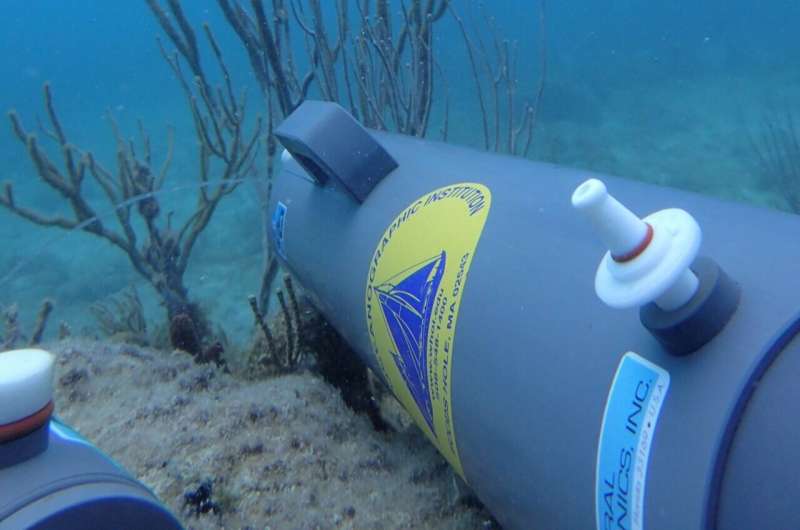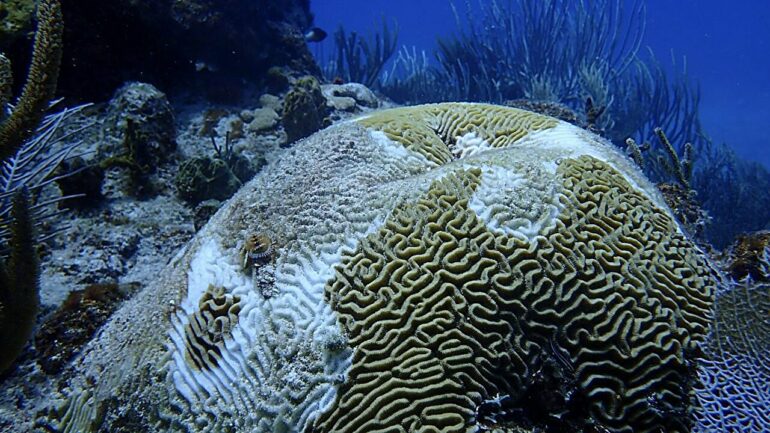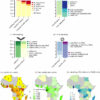The human gut is full of microbes. Some microbes can make people sick, while others are responsible for balancing gut health. But humans aren’t the only species whose health depends on these microorganisms. Coral reef ecosystems rely on microorganisms to recycle organic matter and nutrients. These cells also help feed corals and other life reliant on reefs.
Researchers from WHOI studied the microbes in coral reef water by examining eight reefs in the U.S. Virgin Islands over a period of seven years, which included periods of hurricane and coral disease disturbance.
“Coral reefs have been declining for decades. Climate change, hurricanes, disease, and other stressors have played a major part in that,” said Cynthia Becker, first author of the study and recent graduate of the MIT-WHOI Joint Program.
“Reefs provide habitat for about 25% of all marine species, but they also support billions in tourism and fishing. It is important for us to monitor changes in coral reefs as they are happening and the microbes in their environment can really help us do that.”
The study, “Microorganisms uniquely capture and predict stony coral tissue loss disease and hurricane disturbance impacts on US Virgin Islands reefs,” published in Environmental Microbiology, explains the impacts coral reef disturbances have on microbes.
During the two major events studied, hurricanes Irma and Maria in 2017 and the stony coral tissue loss disease outbreak starting in 2020, there were increases of ammonium concentration in the water, leading to a 34% decline in Prochlorococcus bacteria. Prochlorococcus is a small photosynthetic bacteria, which brings new carbon into the coral’s ecosystem, supporting its health, but also producing oxygen for our atmosphere.

Niskin bottles were used to collect seawater from the coral reefs in St. John, USVI. © Amy Apprill, Woods Hole Oceanographic Institution
“A lot of how we study coral reefs is done on a macroorganismal level. However, alterations in corals and fish communities might remain unseen for months or years. This makes it difficult to track the health of these vulnerable reefs in real time,” said Amy Apprill, a microbial ecologist at WHOI and corresponding author of the study.
“Microbes are the hidden engines of coral reefs, and they grow quickly and are responsive to nutrient, temperature, pH and other conditions. By sampling the water, we can see the immediate impacts of disturbances and intervene to support the reefs before the situation potentially worsens.”
Researchers used eDNA to analyze the reef’s microbial community. This genomic technique involved collecting reef water samples, where there are about 1 million microbial cells in every milliliter, and sequencing the microbial DNA in the samples to identify microorganisms. This provides scientists with a noninvasive way of gathering near real-time information about the reef’s condition.
“Understanding the composition of a healthy reef microbial community is important. Without the balance of micro and macroorganismal health, you cannot have a healthy functioning ecosystem,” Becker said.
“Another benefit to this advancement is for coral reef restoration efforts. The microorganisms can provide an assessment of the ecosystem health. This could complement visual assessments to determine if a reef’s health has been restored.”
More information:
Cynthia C. Becker et al, Microorganisms uniquely capture and predict stony coral tissue loss disease and hurricane disturbance impacts on US Virgin Island reefs, Environmental Microbiology (2024). DOI: 10.1111/1462-2920.16610
Provided by
Woods Hole Oceanographic Institution
Citation:
eDNA methods give a real-time look at coral reef health (2024, April 5)



